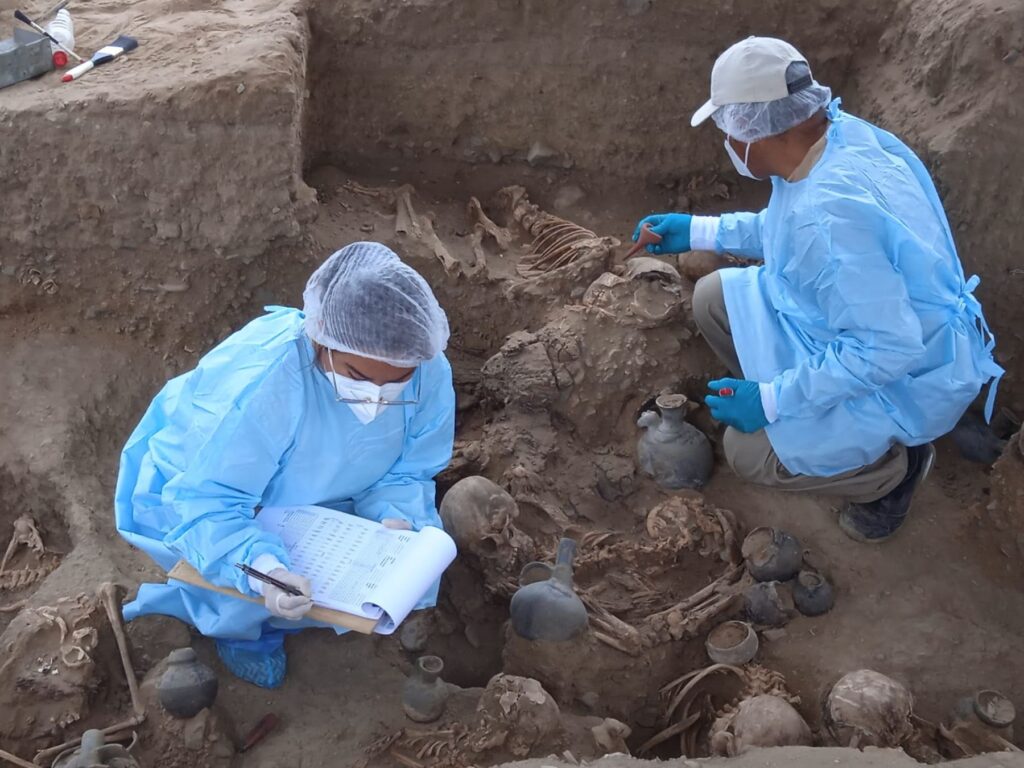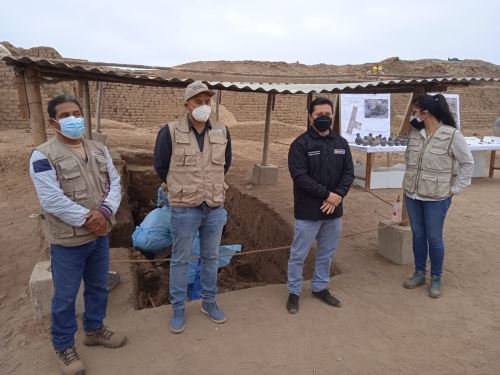Peru: Skeletal remains of 25 people found at Chan Chan archaeological site
According to an Andina report, the remains of 25 people and some 70 artefacts and ceramic vessels have been uncovered in a raised area near the southern wall at Chan Chan, the 1,100-year-old Chimu capital on the coast of northern Peru.

It was located in Trujillo Province (La Libertad region) – archaeologists behind this important find have reported.
According to Jorge Meneses —head of the archaeological research project— this find is unusual due to its characteristics and location in a raised area of the Utzh An (Great Chimu) walled complex.
“Most of them (the remains) belonged to women under 30 who were buried with objects used in textile activities, a couple of children, and a couple of teenagers.
It is a very specific population, not too young considering the average human lifespan was 40 years, “I have remarked.

Meneses said that this discovery took place three weeks ago during the fourth season of works on the southern wall at Chan Chan.
The skeletal remains were found in an area of 10 square meters, arranged in two levels of the embankment, along with approximately 70 vessels and objects used in textile work.
Burial place for Chimu elite
For her part, Sinthya Cueva —head of the Chan Chan Archaeological Research Program— confirmed that the discovery took place three weeks ago and may have been a burial place for members of the Chimu elite.
“This is something new to us because, in spite of this, we are finding individuals and not simple ones, but of a more relevant category due to the number of objects placed with them as an offering. We may be walking over more remains, “Cave stated.
“We have found several individuals in the western part (of the site) since 2020, and we expect to continue to do so across the eastern sector in the coming seasons. That’s why we suggest that all this raised area could be a pre-Hispanic cemetery, “she added.





